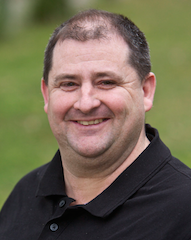Grahame Grieve's FHIR report from Baltimore HL7 Meeting
 Grahame GrieveLast week, HL7 held it’s annual plenary meeting in Baltimore at the Hyatt Regency. As usual, the Hyatt Regency’s odd-ball design generated a few comments, but we were not treated to a repeat of the comic-con the weekend before (provided a colorful backdrop to the last Baltimore meeting). I’m pretty sure I heard that this was HL7’s largest meeting ever. What I can say for sure is – accommodation is increasingly hard to get for HL7 meetings; make sure you get in early for the next one.
Grahame GrieveLast week, HL7 held it’s annual plenary meeting in Baltimore at the Hyatt Regency. As usual, the Hyatt Regency’s odd-ball design generated a few comments, but we were not treated to a repeat of the comic-con the weekend before (provided a colorful backdrop to the last Baltimore meeting). I’m pretty sure I heard that this was HL7’s largest meeting ever. What I can say for sure is – accommodation is increasingly hard to get for HL7 meetings; make sure you get in early for the next one.
For the FHIR project, our main attention was the ballot. Across the core standard, and multiple implementation guides, we received >800 detailed comments as part of the ballot. This represents a slight increase over the last ballot, but there was a clear change in the focus of the comments – there was a significant drop in the number of comments relating to the infrastructure, and much more focus on the domain content, and it’s applicability to real world problems. This is a clear marker of the growing maturity of the standard. We continue to expect that we’ll publish FHIR release 3 at the end of this year.
Most of the meeting was devoted to ballot reconciliation, with a focus on the difficult to resolve items. But we got plenty of other things done as well:
- The FHIR connectathon was out biggest ever, with more streams, more success, more of everything. Note, that the next meeting, in San Antonio, it’s doubtful we can accomodate that many people, so it’s probably going to be a case of getting in early…
- The clinicians on FHIR event was also a success – well, what I saw of it. But since we’ve had people asking us about the event, and whether they can run their own, we filmed a documentary about the event – thanks to Kai Heitmann for doing that. We’re not planning to post this publicly; instead, if you’re interested in hosting a clinicians on FHIR event, let me know, and I’ll share it with you when it’s done
- We (members of the FHIR team) met with several new communities that haven’t previously been part of the FHIR community, and planned how they could get engaged, and share their energy and outputs with us. As always this is a collaborative
process, and I’ll be making more announcements about this going forward - We made some specific decisions to change widely implemented parts of the specifications; consultation with the wider community around these changes is ongoing (see “JSON Comments” and “Logical References“). This is reflective of our process towards normative; some of the next version of FHIR (release 4) will be normative. I’ll be making more announcements about how that’s going to work in the future (when we figure it out).
- Probably the most significant single decision we made was to take the specification known by the obtuse code word “DAF-core” – that’s the spec based on the Project Argonaut collaboration – and rename it to the US realm Implementation guide, of which it comprise be one section, how to represent the Common Clinical Data Set. Over time, the US realm implementation guide will grow to encompass more than just that. (btw, one decision related to this is that we are working to bring the technical specification from SMART that Argonaut used to HL7 as an appendix to the FHIR specification, named something like the “Application Launch Framework”)
- Finally, the FHIR foundation continues to take shape as a key part
of the eco-system to support the implementation process of standards
(as opposed to the actual development of the standards themselves).
In particular, it looks like we’ll soon be able to set fhir.registry.org
live, which is a key piece of the FHIR picture that many people are awaiting.
Overall, the FHIR development team (well, teams – there are many interlaced teams with responsibilities for different parts of the specification, the process, and the community) are happy with a gradual progress. While there is still much to be done across all the specification, the plenary meeting marked our 5th year anniversary, and we are proud of what we’ve achieved in that time.
| Grahame Grieve FHIR report from Baltimore HL7 Meeting was authored by Grahame Grieve and first published in the HL7 FHIR Product Blog. It is reprinted by Open Health News with permission from the author. The original post can be found here. |
- Tags:
- Application Launch Framework
- Argonaut
- clinicians on FHIR
- collaborative process
- Common Clinical Data Set
- DAF-core
- FHIR
- FHIR Connectathon
- FHIR foundation
- FHIR Project
- FHIR release 3
- FHIR specification
- Grahame Grieve
- health data
- Health IT Interoperability
- HL7 International
- HL7 Meeting
- implementation process of standards
- JSON Comments
- Kai Heitmann
- Logical References
- open API
- open architecture
- Open Data
- open health
- open source
- open source software (OSS)
- open standards
- Project Argonaut collaboration
- SMART
- US realm Implementation guide
- Login to post comments